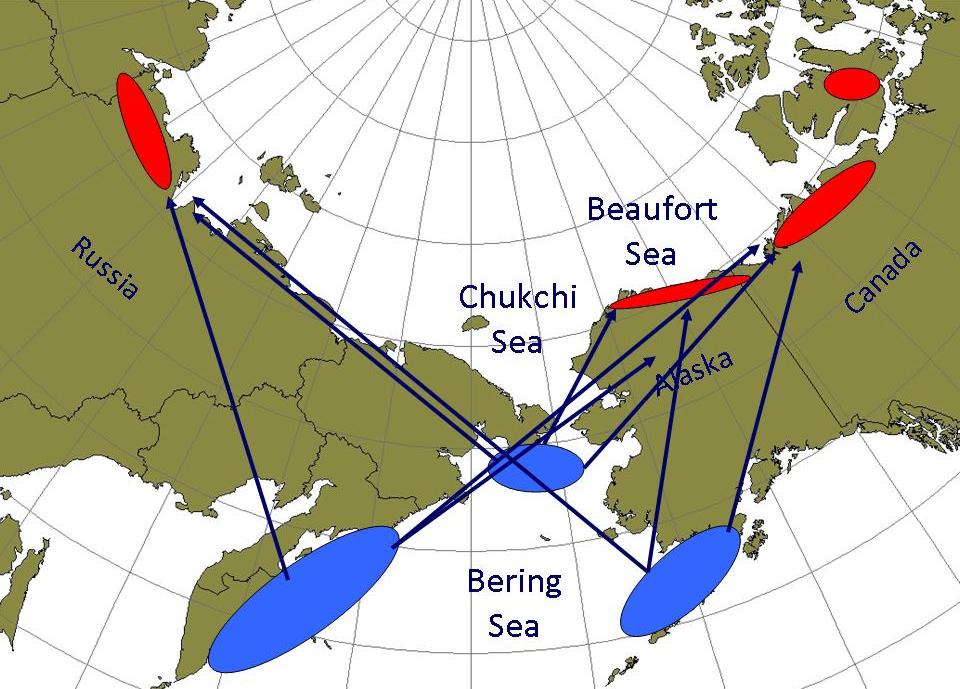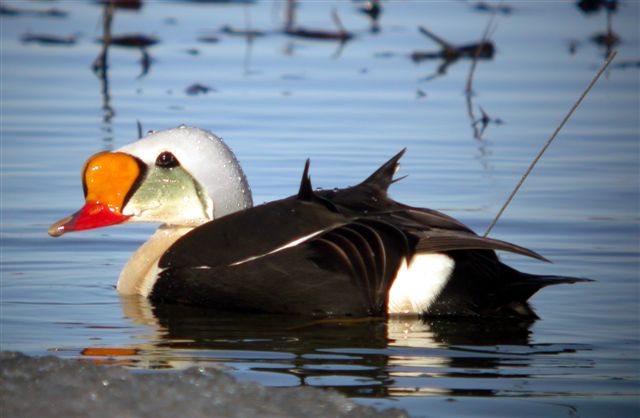King Eiders show very weak migratory connectivity, and all birds breeding from the Taymyr Peninsula in Siberia to the Central Canadian Arctic belong to a single panmictic population. King Eiders from this vast breeding range winter all around the Bering Sea, and birds from each breeding region migrate to all winter regions.
All adult females tracked for more than a year returned to the same breeding area as the one where they had been captured in the year before. None of the adult males did; instead, males dispersed all over the breeding range from Taymyr in the west to Victoria and Banks islands in the east. Males presumably followed females they acquired during winter or spring migration to those regions. The males thus provided evidence that from each winter region birds migrate to all breeding regions throughout the range.
 |
 |
| Schematic representation of individual migration between breeding regions (red) and winter regions (red) The black arrows indicate schematic connections, not actual migratory pathways. |
Schematic representation of migratory connectivity between winter regions (blue) and breeding regions (red) for King Eiders wintering on the Bering Sea. The blue arrows indicate schematic connections, not actual migratory pathways. |
[back to King Eider main page]
 Since 1997 the Canadian Wildlife Service and the University of Alaska Fairbanks have tracked the migrations of adult King Eiders captured on breeding grounds in northern Alaska and the western Canadian Arctic. Altogether 208 birds were tracked with an implanted satellite transmitter, contributing to a better understanding of the migration routes, distribution, and site fidelity of this species
Since 1997 the Canadian Wildlife Service and the University of Alaska Fairbanks have tracked the migrations of adult King Eiders captured on breeding grounds in northern Alaska and the western Canadian Arctic. Altogether 208 birds were tracked with an implanted satellite transmitter, contributing to a better understanding of the migration routes, distribution, and site fidelity of this species 
